17 Different Types of Ducks in North America? Duck Identification: Puddle duck, Gadwall, Widgeon, Shoveler, Teal, Diving Ducks, Redhead.
Types of Puddle Ducks (Dabbling Ducks)
What are all the puddle ducks?
Also known as a dabbler or dabbling ducks, puddle ducks are a group of waterfowl that glide through shallow waters, indulging in their feeding habits without ever submerging beneath the water's surface. They feed by plunging their heads into the water, grazing on a variety of aquatic plants, vegetation, larvae, and insects.
Mallards, teal, wood ducks, widgeons, gadwalls, pintails, and shovelers are all puddle ducks.
Mallard Duck

The mallard is the most common type of duck in the world. Almost all domestic ducks come from this species. The mallard showcases remarkable adaptability in flourishing within urban environments.
The males or drakes are often called greenheads. The main wintering area is the lower Mississippi basin, and along the gulf coast, but many stay as far north as open waters permit.
Flocks often feed in early morning and the late afternoon in nearby harvested fields, returning to marshes and creeks to spend the night. The flight is not particularly rapid. Hens have a loud quack; the drake's voice is a low-pitched kwek-kwek.
Black Duck
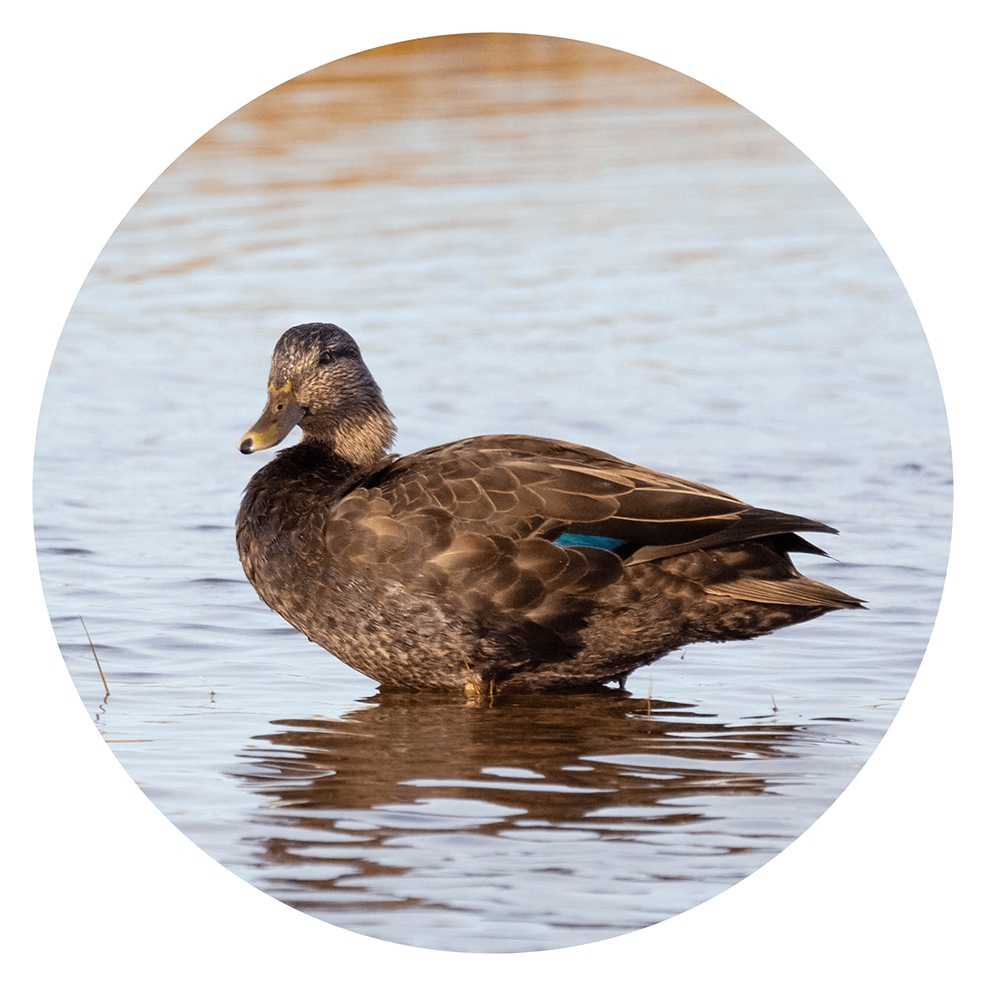
This is a bird of the eastern states, primarily the Atlantic Flyway and, to a lesser extent, the Mississippi.
Shy and wary, they are regarded as the wariest of all ducks.
Wood Duck
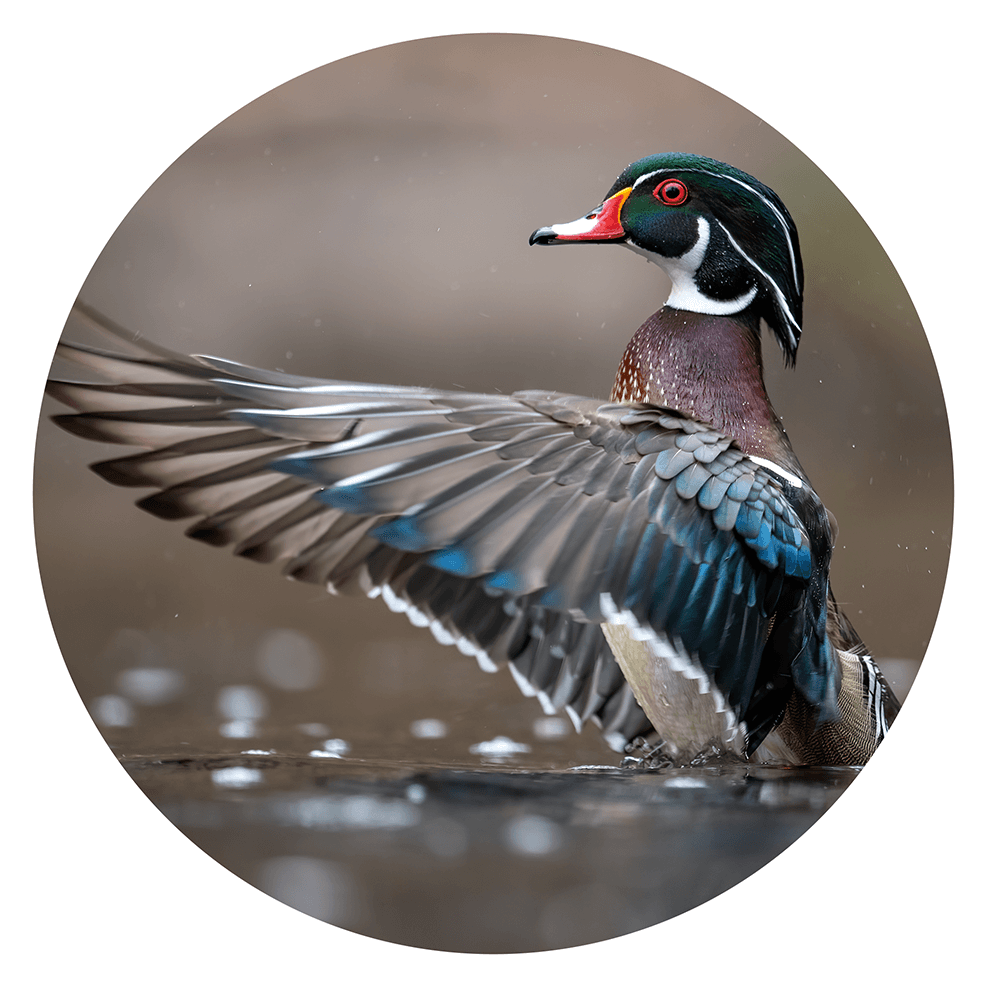
Found in all flyways; Wood Ducks are most numerous in the Atlantic and Mississippi Flyways and fewest in the Central. They are early migrants; most of them have left the northern states by mid-November. Male wood ducks are the most colorful of North American waterfowl.
They frequent wooded streams and ponds and perch in trees. They fly through thick timber with speed and ease and often feed on acorns, berries, and grapes on the forest floor. Their flight is swift and direct; flocks are usually small.
Pintail Duck
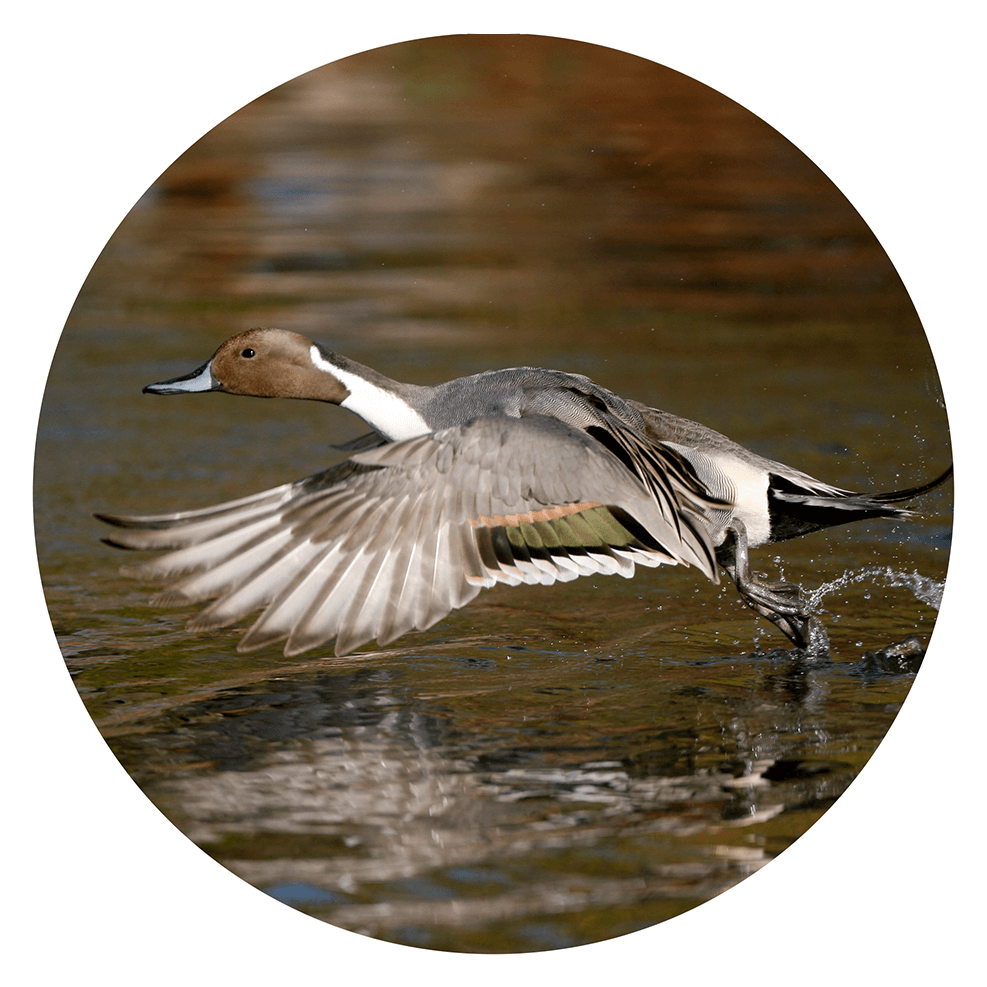
These ducks use all four flyways, but are most plentiful in the west.
They are extremely graceful and fast fliers, fond of zig-zagging from great heights before leveling off to land.
Gadwall Duck

Gadwalls are most numerous in the Central Flyway, but not too common elsewhere. They are often called "gray mallards" or "gray ducks." They are one of the earliest migrants, seldom facing cold weather.
They are the only puddle ducks with a white speculum.
Widgeon Duck
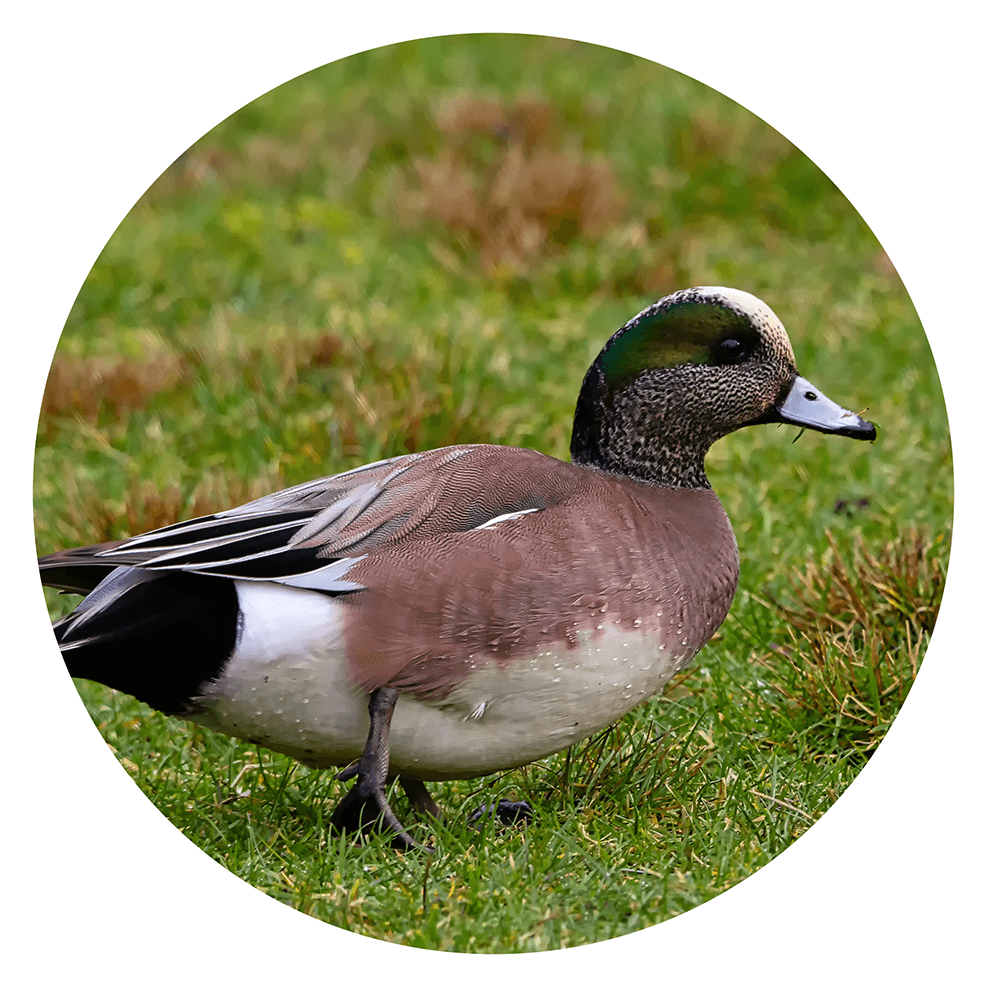
These are nervous birds, quick to take alarm. Their flight is fast, irregular, with many twists and turns. In a bunched flock, their movements have been compared to those of pigeons.
When open water is handy, widgeons often raft offshore until late afternoon when they move to marshes and ponds to feed.
Shoveler Duck
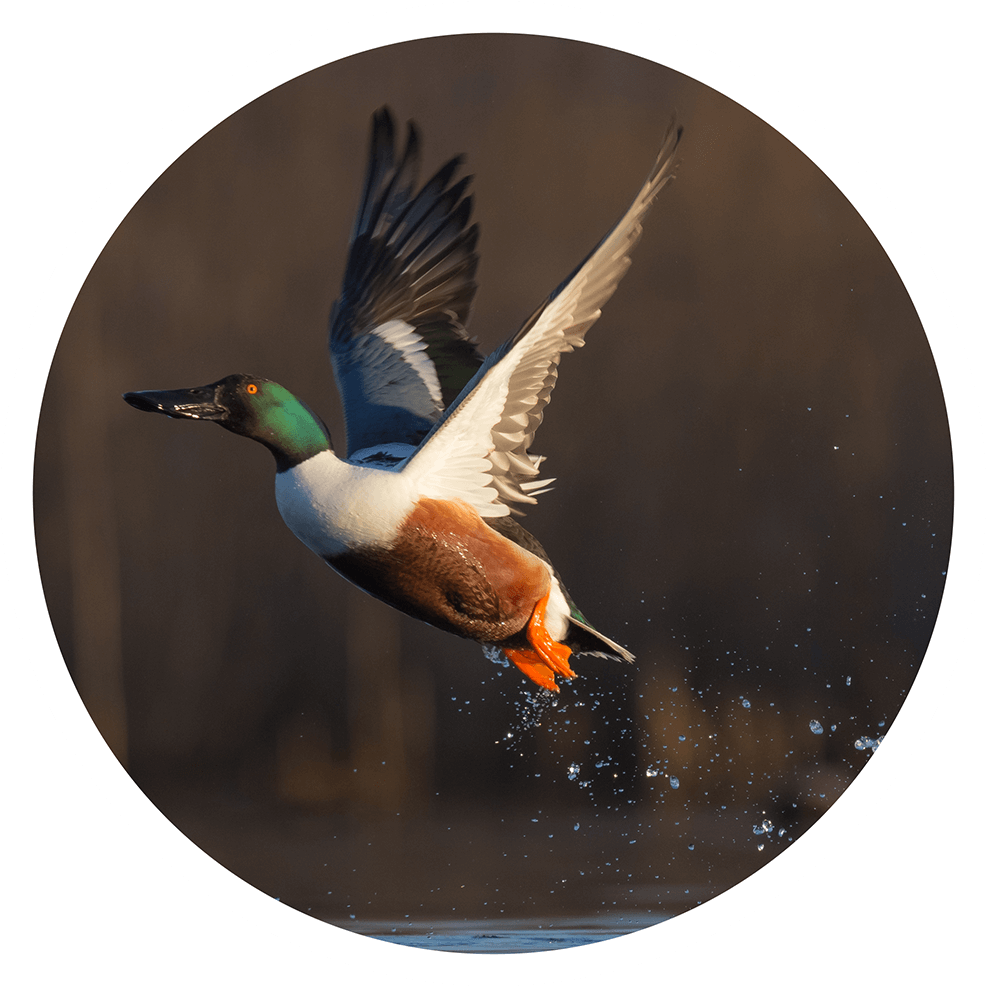
Shovelers, known as "spoonbills" to many, are early migrants, moving out at the first frost. The largest numbers are in the Central and Pacific Flyways.
The usual flight is steady and direct. When startled, the small flocks twist and turn in the air like teal.
Green-Winged Teal Duck

Quite hardy, some birds stay as far north as open water is found.
This is the smallest and one of the most common ducks. Their tiny size gives the impression of great speed, but mallards can fly faster. Their flight is often low and erratic, with the entire flock twisting and turning as one unit.
Blue winged teal duck
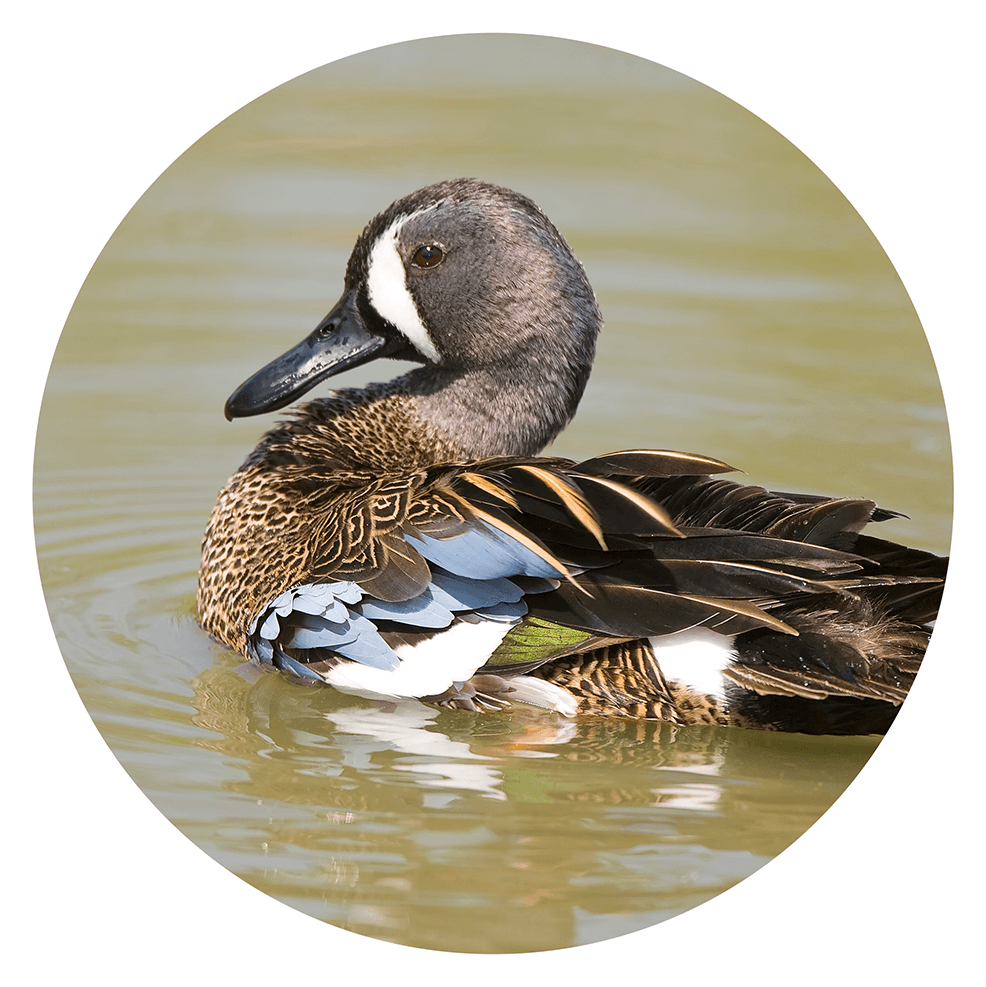
The Blue winged teal is the second-most abundant duck in North America. Their small size and twisting turning flight gives the illusion of great speed. The small, compact flocks commonly fly low over the marshes, and often take the hunter by surprise.
They are more vocal than most ducks. Their high-pitched peeping and nasal quacking is commonly heard in spring and to a lesser extent in fall.
Cinnamon Teal Duck
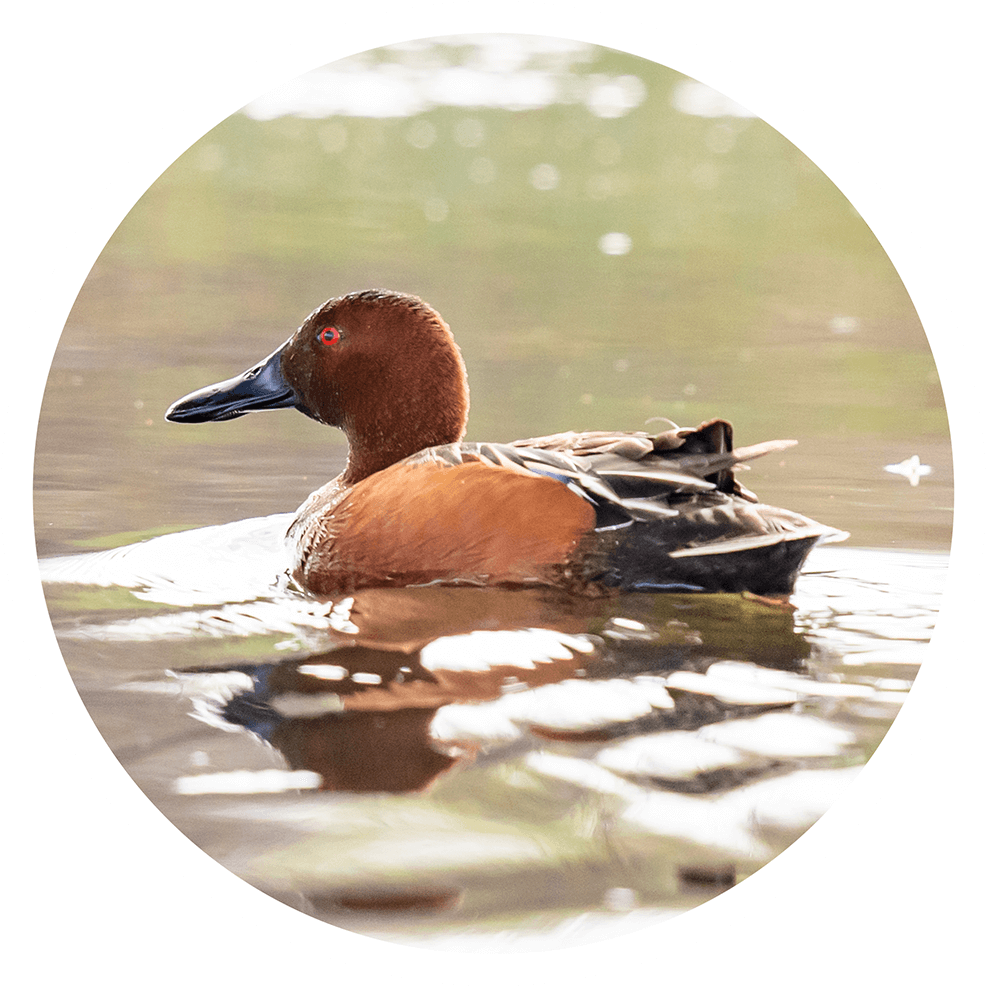
In the Pacific Flyway, cinnamon teal are far more common than blue-wings. The hens look alike and the habits of both species are similar.
The pale blue forewing patch is the best field mark, as drakes are usually in eclipse until January or longer.
What is the most common duck?
The mallard
The mallard is the most common duck in North America and can be found in all migration flyways. Male mallards are often called "greenheads" because of their distinctive coloring. They mainly spend the winter in the lower Mississippi basin and along the Gulf Coast, although many remain farther north wherever the water stays open.

What is the most famous duck?
When it comes to famous ducks, the mallard immediately stands out. Recognized by its striking green head and familiar quack, the mallard is a true icon among waterfowl—second only to the legendary Donald Duck in popularity. Its widespread presence in ponds, lakes, and parks makes it instantly recognizable to people of all ages around the world, solidifying its place as a beloved symbol of ducks everywhere.

Types of Diving Ducks
Diving ducks, also known as sea ducks, are typically found in large, deep lakes and rivers, as well as coastal bays and inlets. Most of these ducks gracefully patter along the water before taking flight. They are skilled divers, constantly searching for food, while dabblers rarely venture beneath the surface.
Canvasback Duck
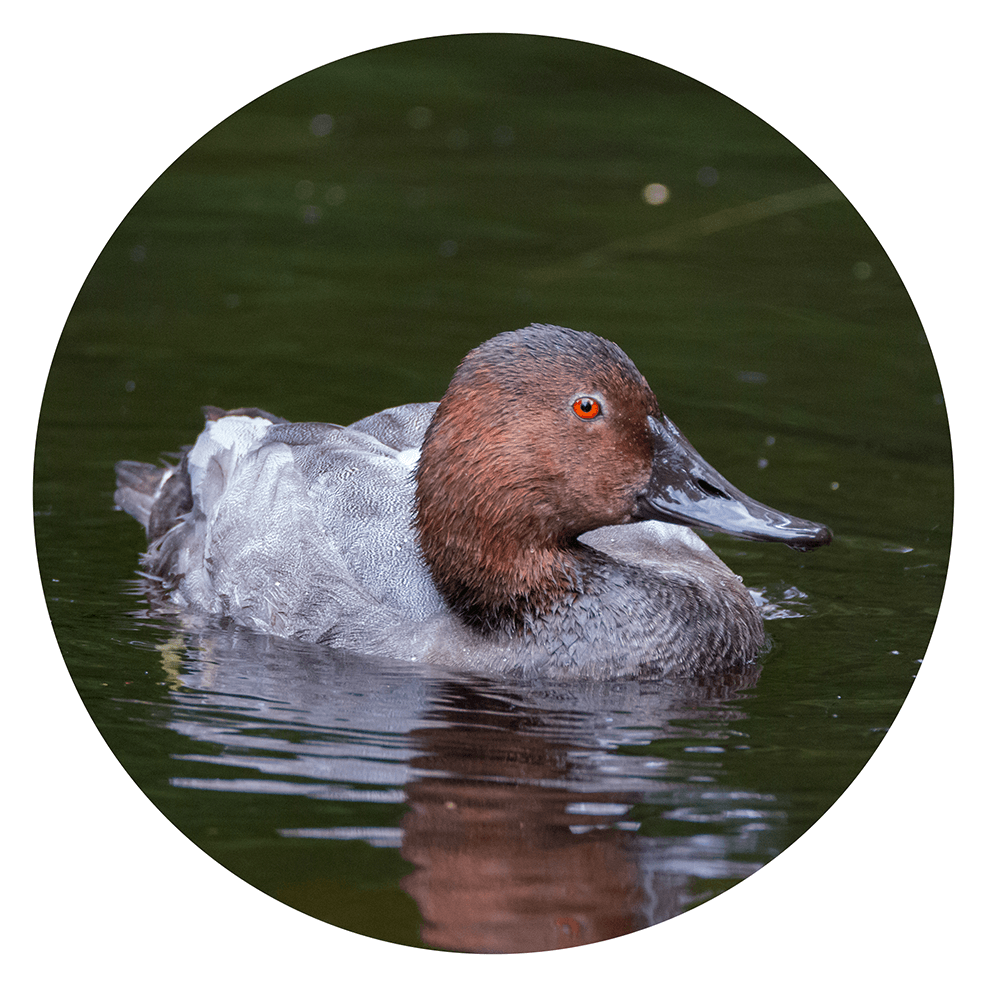
The Canvasback duck is a species of diving duck, the largest found in North America. This species has been nicknamed bull-neck, and referred to as the aristocrat of ducks. The Canvasback Duck is an elegant and distinctive diving duck with a long sloping forehead and long, black bill.
Redhead Duck
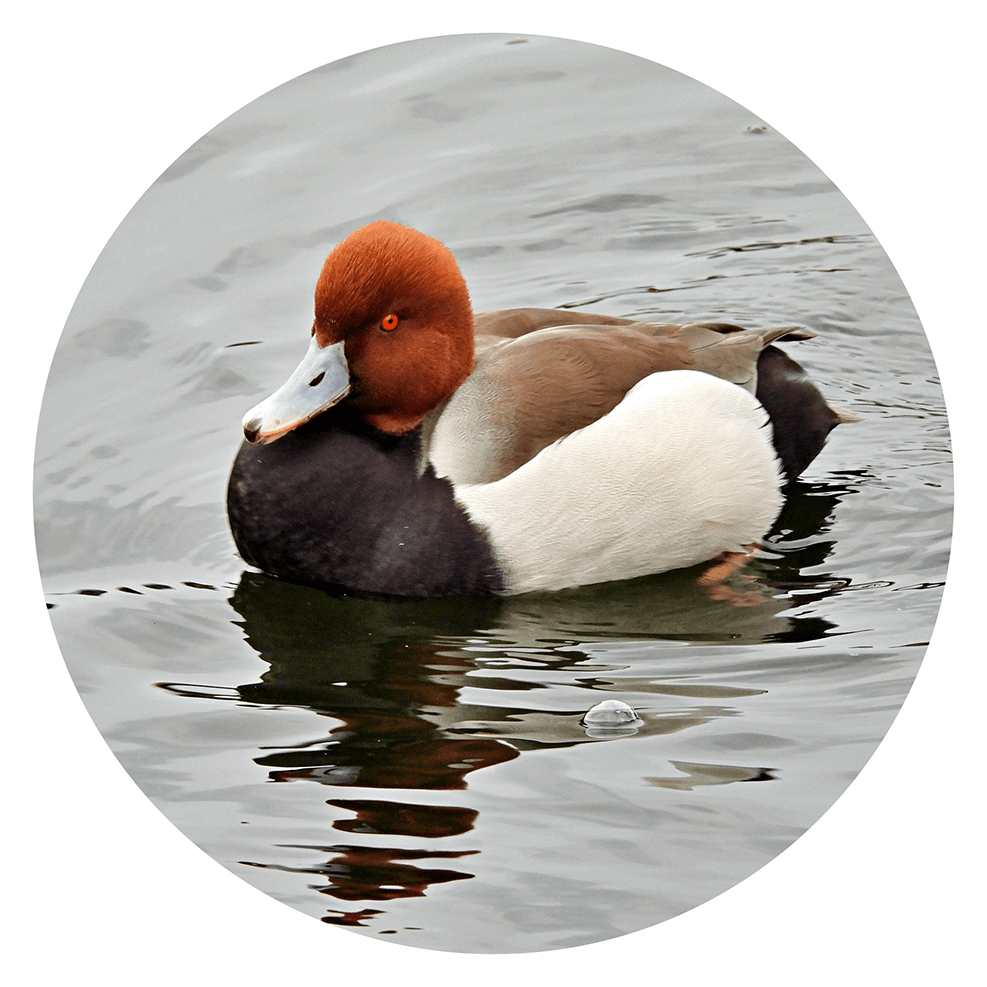
Medium-sized duck, Redhead weights about 2 to 2 1/2 pounds, measures 20-22 inches long, grayish sides and back, black chest and rump and white belly. Their heads are rounded and rusty red, bills gray with white band toward tip, feet gray and eyes lemon yellow.
Scaup Duck

There are two species of Scaup: greater and lesser. Except for the wing marks, both species appear nearly identical in the field. The light band near the trailing edges of the wings runs almost to the tip in the greater scaup; but only about half way in the lesser scaup. Greater scaup prefer large open water areas while lesser scaup often use marshes and ponds.
Ring-Necked Duck

Ring-necked ducks are similar in appearance to scaup. However, ringnecks are typically found in fresh marshes and wooded ponds. The vertical white stripe on the side and solid black back are the best identifying traits in the field for the male. Faint brown ring on drake's neck never shows in the field. Ringnecks have conspicuous light bands at the tip and base of their bills.
Goldeneye Duck
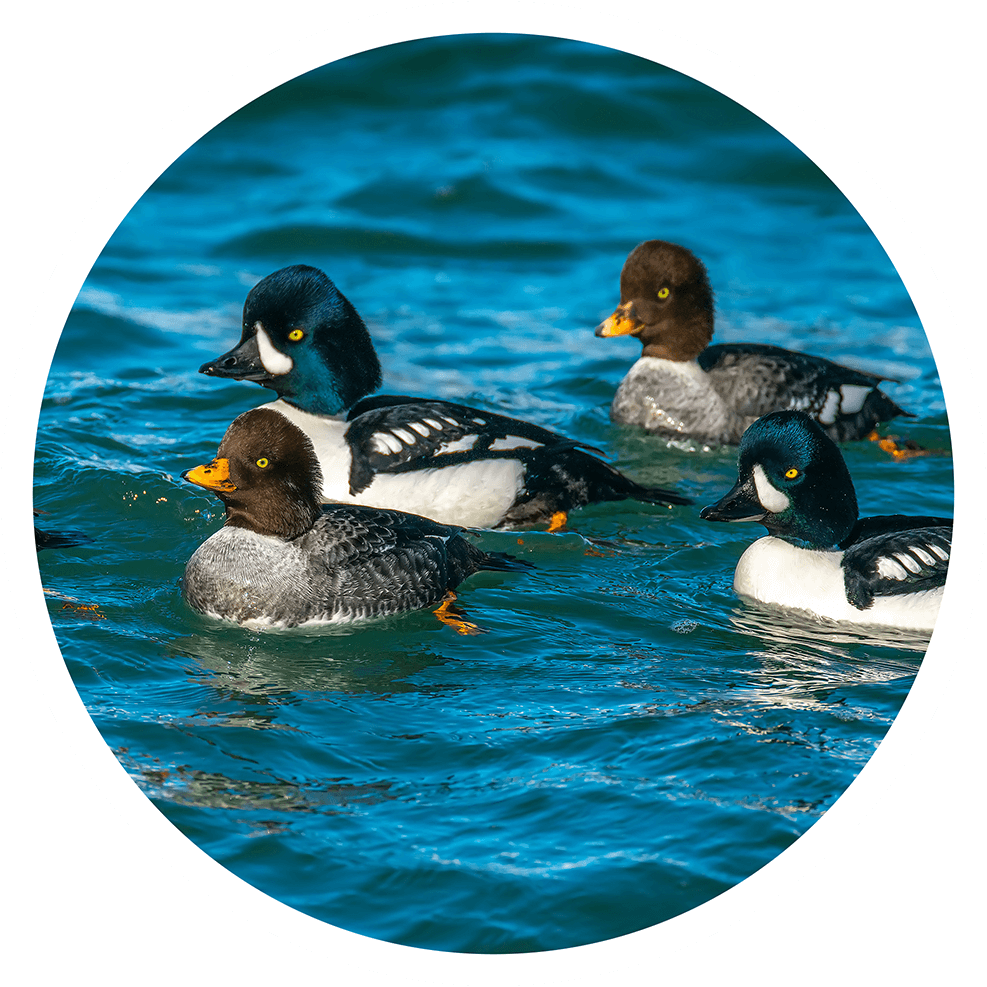
Distinguishing characteristics include the golden colored eye, round dark head, puffy crest, and wing patch. The male has a unique round white facial spot. Goldeneyes are active, strong-winged fliers moving singly or in small flocks. Distinctive wing-whistling sound in flight has earned them the name of whistlers.
Bufflehead Duck

The bufflehead is the smallest diving duck in North America. The bufflehead has a white and black head. Unlike most divers, it takes off without running along the water surface. They can fly straight up from a watery takeoff. Male has large white patch on a puffy greenish head.
Ruddy Duck
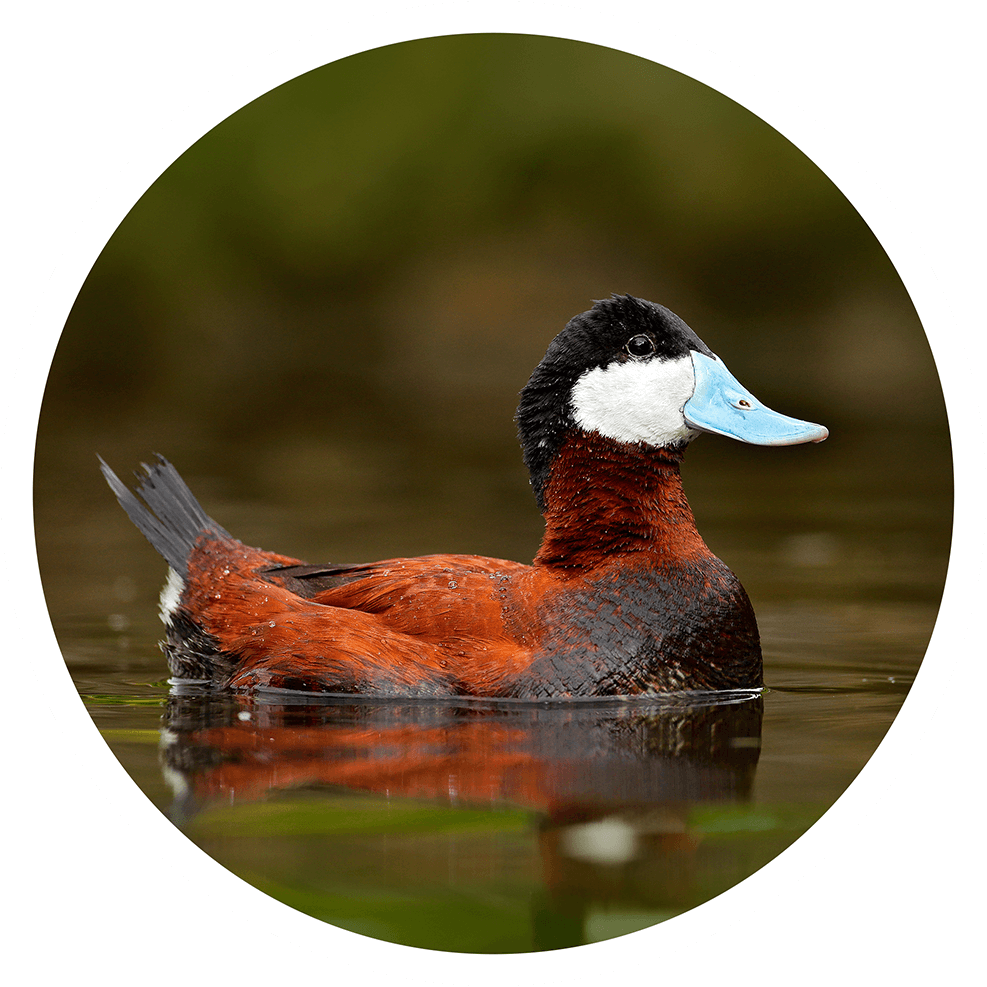
The ruddy duck often dives off, swims away from danger rather than flying. When flying, their small wings stroke so fast they resemble bumblebees. Identified by white cheeks under the dark cap and by the long up-tilted tail.
What is the king of all ducks?
Known as the King of Ducks, the canvasback stands out for its impressive size and graceful appearance. Male canvasbacks are easy to recognize by their tall scarlet heads and vivid red eyes, making them a favorite among duck hunters.

Types of Geese
One of the primary ways to distinguish between ducks and geese is by examining the number of bones in their necks. Ducks possess 16 or fewer neck bones, whereas geese have between 17 to 24 neck bones. Additionally, geese and swans are known for their longer necks compared to ducks.
Canada Goose
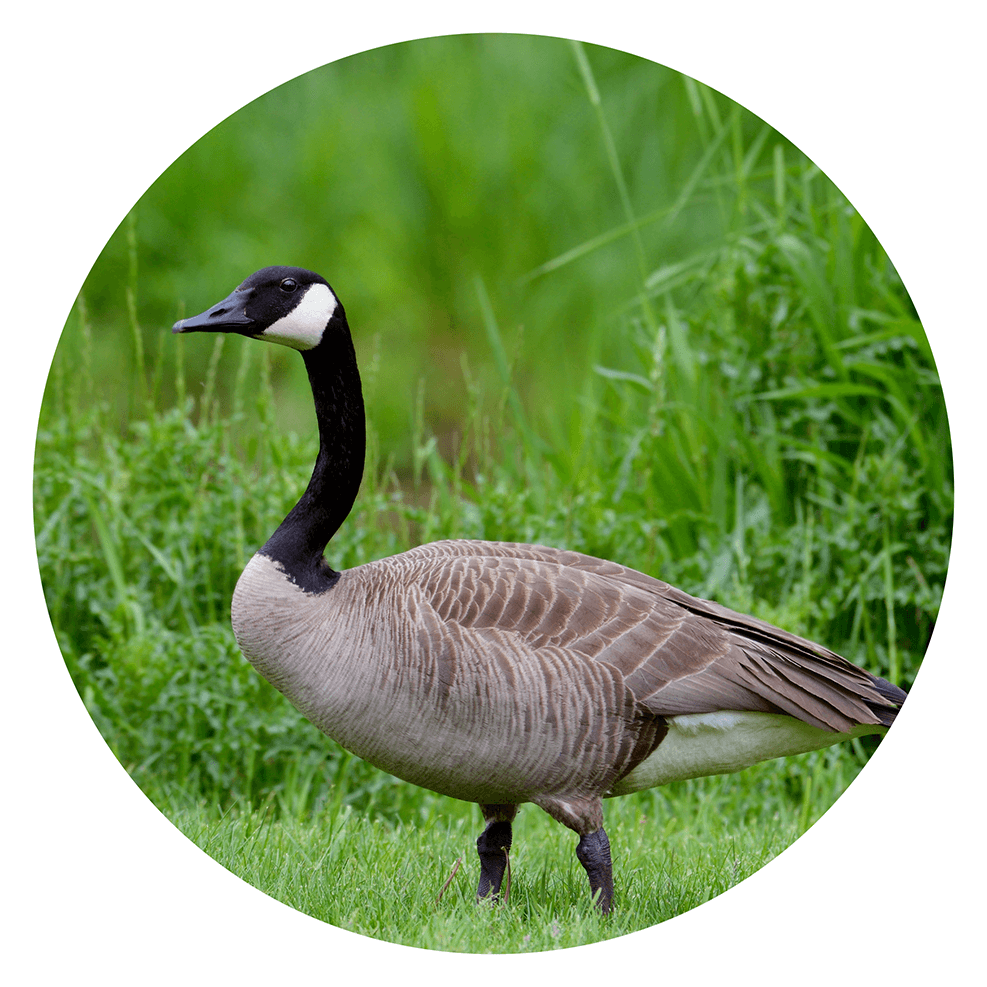
Canada geese are the most common and best known of all geese. The broad white cheek patch on a black head and neck make it easily identifiable. The characteristic "honking" is well known and easily identifiable as they fly overhead. Gathers in large flocks and grazes in open fields within commuting distance of water.
Snow Goose
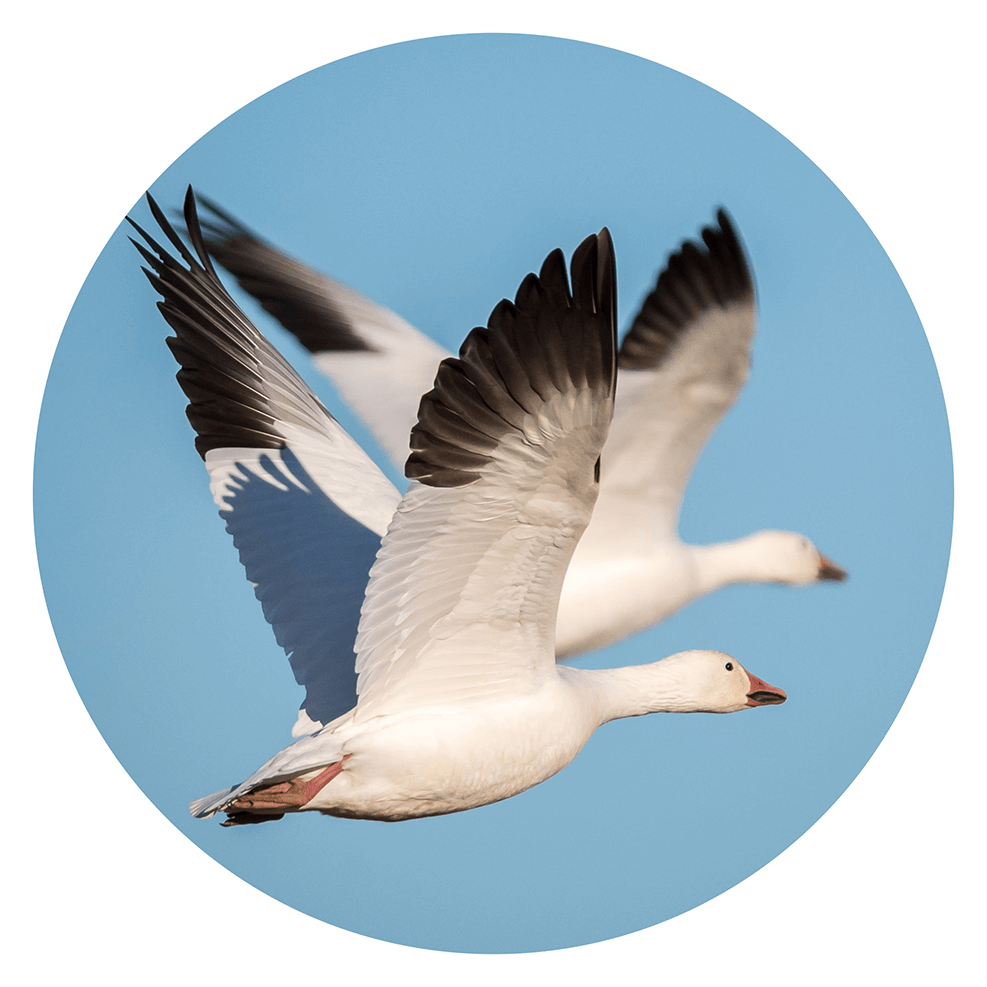
Two color phases occur: white and blue. The adult white phase is pure white with black wing tips. The blue phase is abundant in the eastern Great Plains but uncommon east of Mississippi River. The blue phase has a white head, neck and legs, but a dark body.
White-Fronted Goose
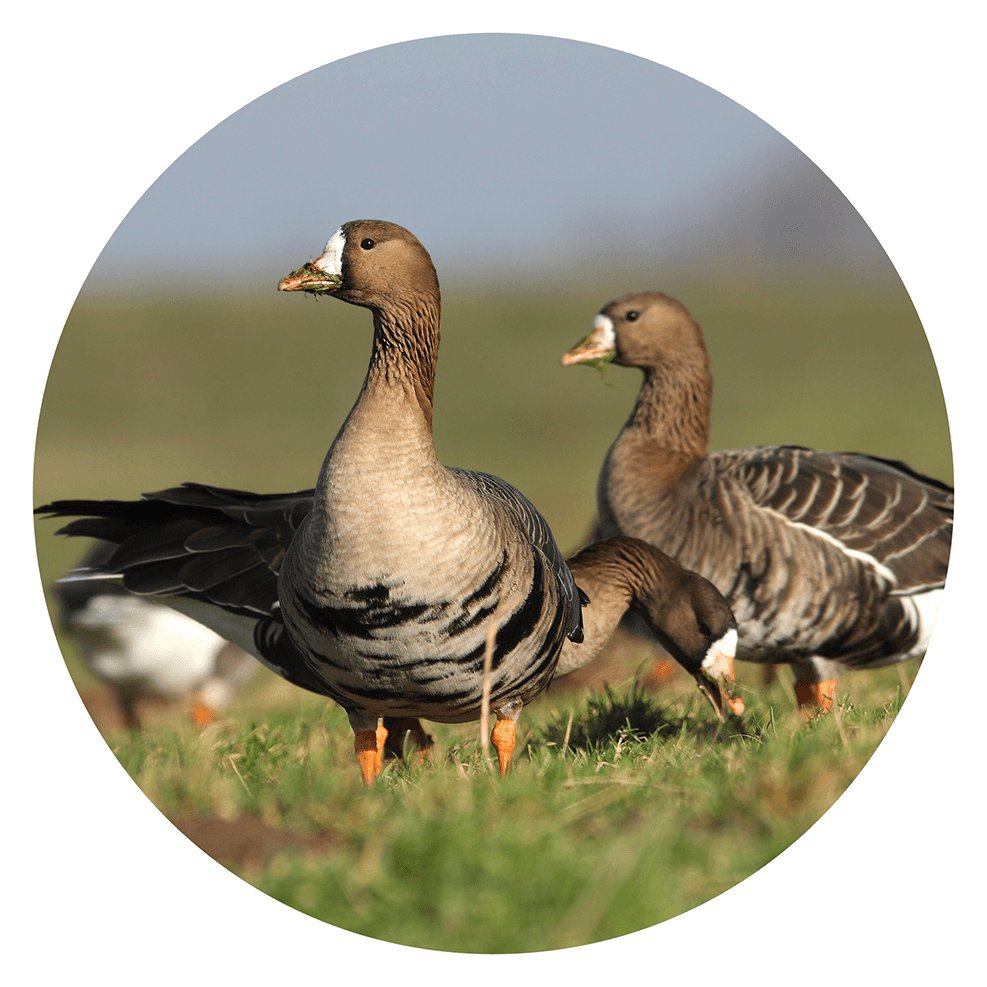
White-fronted goose is medium-sized goose, about 4 1/2 to 7 pounds in weight, 27 to 30 inches in length, grayish brown in color. Adults are characterized by black barring on the breast and white on face. They have yellow-gold bill with adult showing some pink at the base and tip. Their feet are yellow-orange.
Types of Mergansers
Mergansers are majestic ducks, distinguished by their size, long-bodied, and elegant, pointed wings.
Hooded Merganser

The hooded merganser is the smallest of the three merganser species in North America. Hooded mergansers typically inhabit wooded lakes and streams and seldom go to salt water. Their black-bordered white crest easily distinguishes male hooded mergansers from other ducks. Short, rapid wingstrokes create an impression of great speed.
Common Merganser
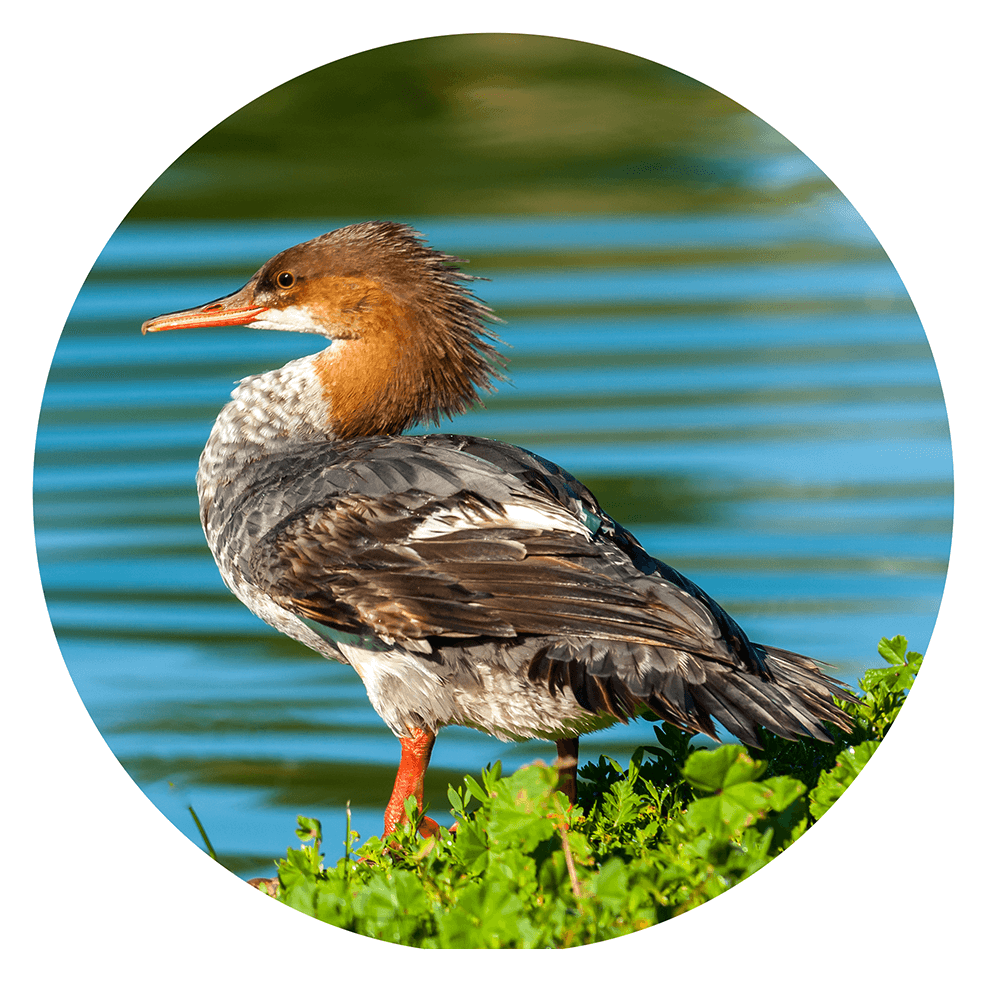
Common mergansers are one of the largest ducks and are commonly found in freshwater habitats. Common Mergansers are sometimes called sawbills, fish ducks, or goosanders. Seldom found in salt water.
Red-Breasted Merganser
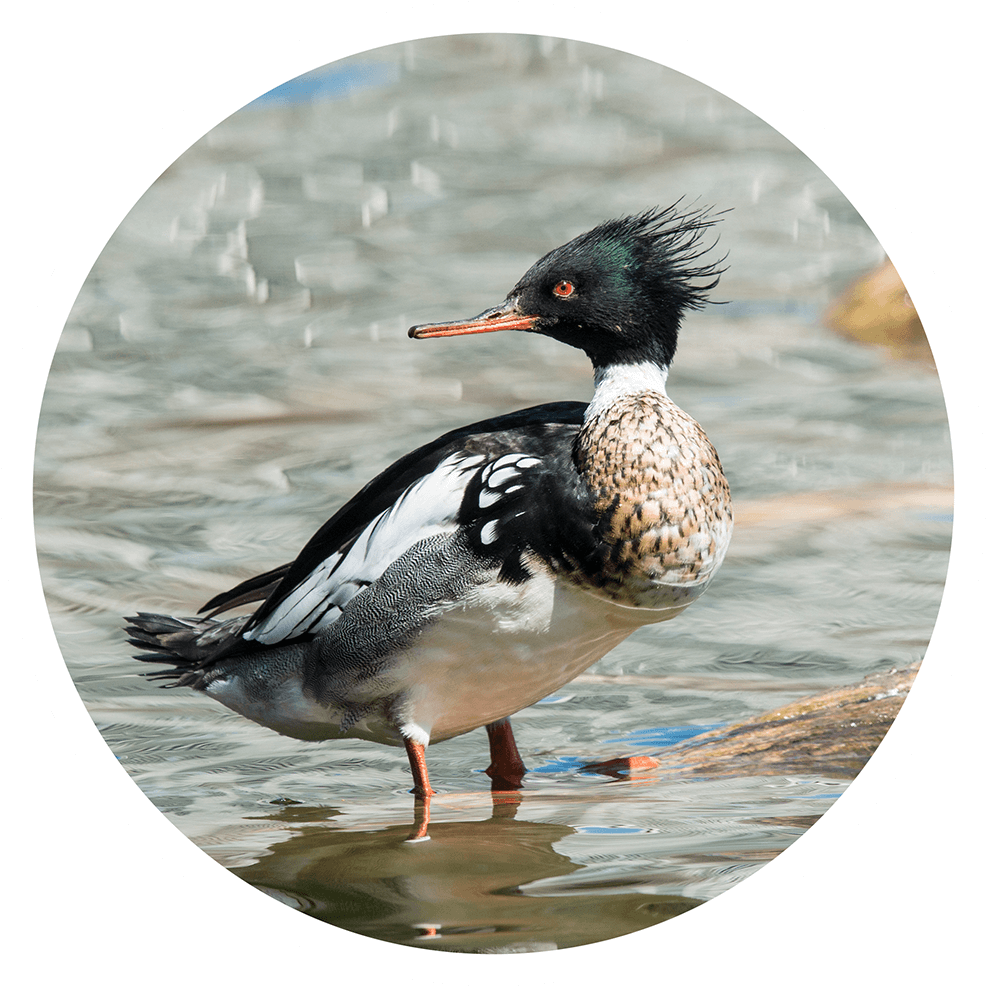
These birds are most commonly found wintering in coastal waters, including the Gulf of Mexico and, to a lesser extent, the Great Lakes. They are difficult to distinguish in flight from the common merganser. Male has a reddish-brown chest patch.
Did you know that to hunt ducks, you must have your hunter safety course and obtain your hunter safety education card.Our hunter safety education course meets the Safety Course Standards set forth by the Department of Natural Resources and by the International Hunter Education Association (IHEA).